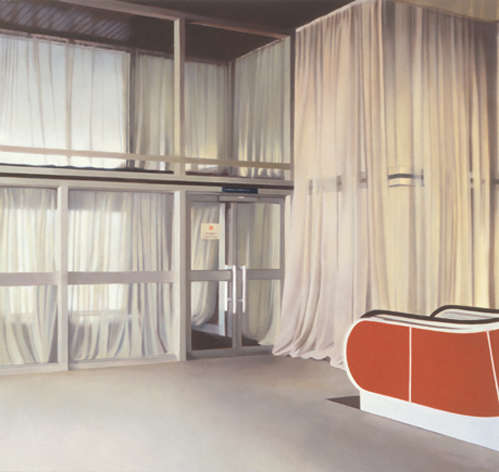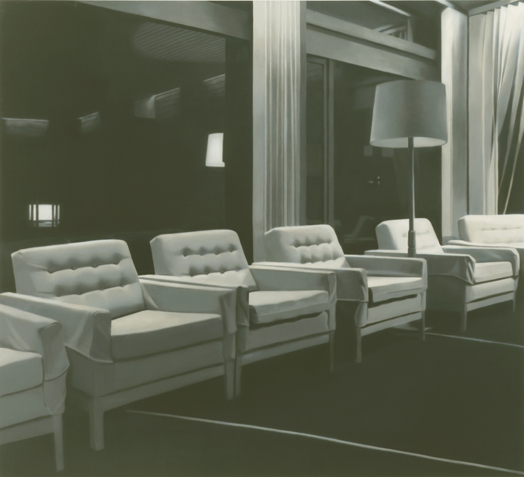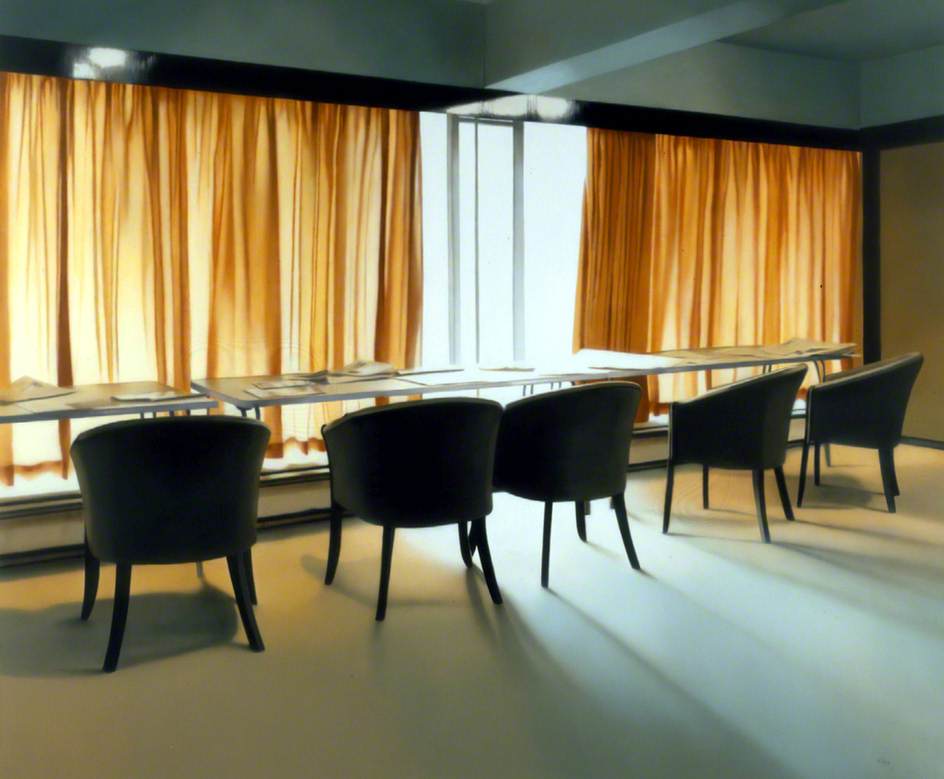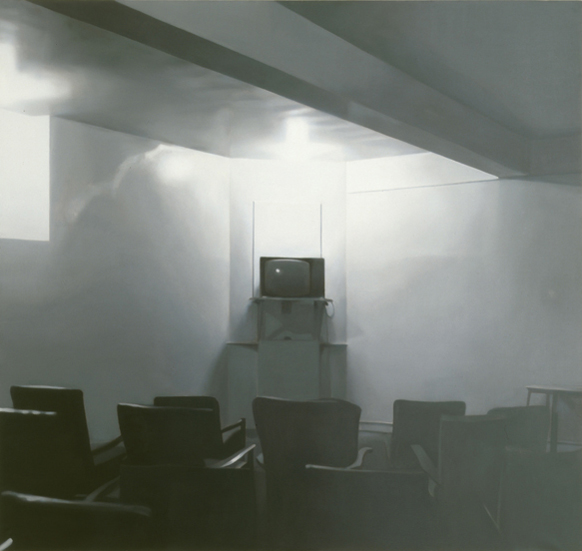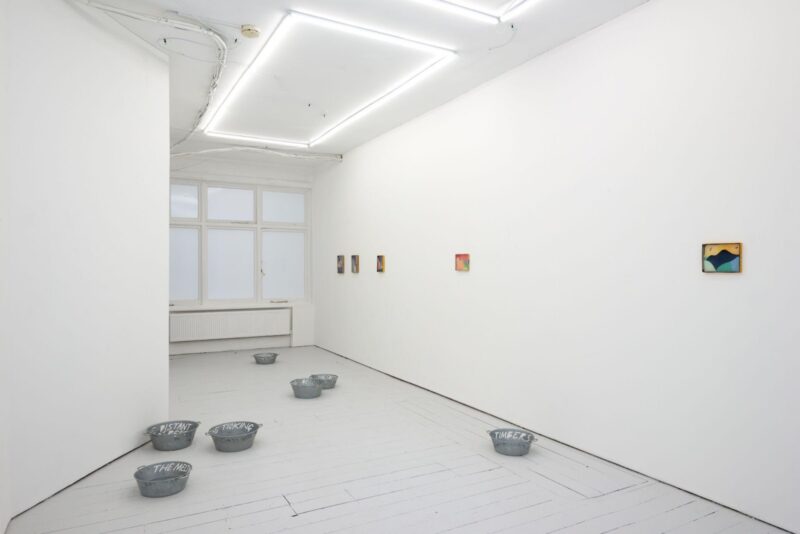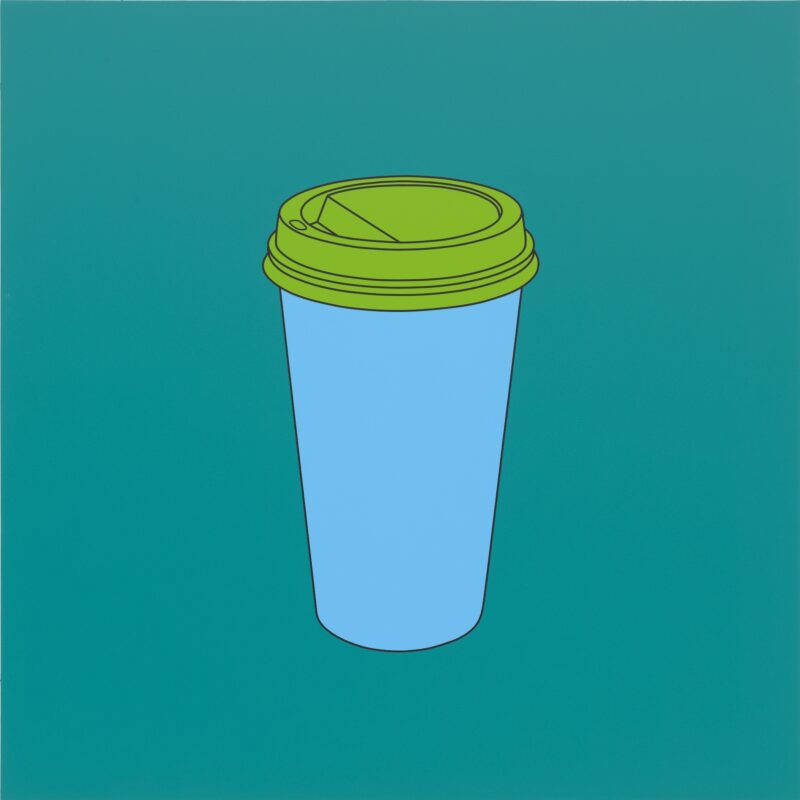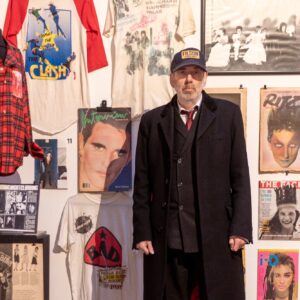Michael Craig-Martin is almost as famous for his collection of writings ‘On Being An Artist’ as he is for his impeccably flat yet crisply sculptural drawing style. At the London Art Book Fair (5-8 Sept at the Whitechapel Gallery) he relaunched it by speaking to Paul Winstanley, who should be better known both for his precisely atmospheric paintings of interiors and landscapes and his book ’59 Paintings’*. Winstanley ‘considers the process of thinking about and making’ 61 works (he aimed at 50, got to 59, and liked the number enough to keep it when a couple more of his 600-odd works to date inspired a self-commentary). Craig-Martin contrasted their work neatly as follows: ‘I make representations, but I’m not interested in representation, only in confrontations with the objects, almost off the canvas into viewer’s space whereas you drop back… I paint the foreground you paint the background’.
Winstanley’s writing and painting make for a beguiling low-key combination. Here are four examples – typical, though representing only part of his range.
‘Lounge 1’, 1992
This institutional lounge is one of the ‘less definable spaces’, crossing between private and public, which interest Winstanley. Their purpose may not be clear, ‘except that these are places in which time passes, either voluntarily of under duress. It was the passage of time which became the central motif of these paintings’.
‘Nostalgia’, 1999, looks out to present ‘the unseen as much as the visible. The implication must be that the nostalgia of its title does not apply to the interior, to that which is visible to us, but to this ‘unseen’ with its potential for longing and yearning’. Nostalgia itself Winstanley describes as ‘representing experience while simultaneously declaring its own process of fabrication’.
Winstanley bases his paintings, far from literally, on his own photographs, generally of well-used sites. ‘Veiled Lobby’ (top) is of a non-pristine, indeed about-to-be-decommissioned, government building which still ‘had its windows draped in bomb-resistant net curtains, protection from flying glass in the event of an IRA strike, not an uncommon threat during the 1970s and 1980s’. Winstanley says the furniture was stacked in the entrance, stopping me choosing only paintings with chairs in.
‘TV Room’ 1991.
Winstanley has painted a series of TV rooms, mostly empty, as ‘a way of ‘making ‘looking at the painting’ part of the subject of the painting being looked at’ and, rather than make an image of an image…I wanted to look out from art and find something with a wider recognition factor’ – a TV turned off to ‘offer for consideration a reflection of viewing’, rather than what is viewed. Such TV rooms are now rare, so as Winstanley observes the painting has come to represents not a commonplace site of identification, but ‘a historical situation which might even reflect past social values’ with their ‘notions of community and the structures they created’.
* both published by Andrew Brown’s Art / Books
Art writer and curator Paul Carey-Kent sees a lot of shows: we asked him to jot down whatever came into his head
